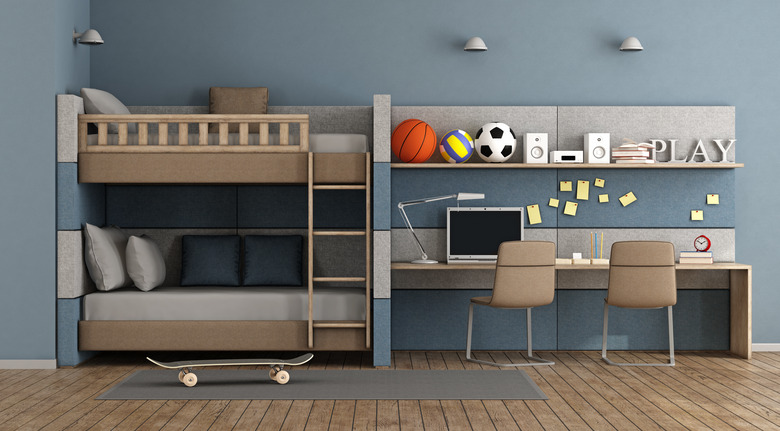How Do I Get Replacement Metal Tubes For Bunk Beds?
They save space and give a good giggle to little kids who love to climb. Bunk beds are a popular space-saving and economical purchase for families, dorm dwellers and apartment residents. A bunk bed with wonky tubes is a safety issue for anyone who is sleeping on or under the bed. Tubes and rods are rather easy to fix or replace.
Replacing Rods
Replacing Rods
The safest thing to do is replace a rod that has lost its structural integrity. The bigger the bend, the better it is to simply replace the rods, which are an integral part of the construction of the bunk bed. If you look for a sticker on the underside of the top bunk back guardrail, it should give you information on the manufacturer. Aside from the name of the company that built it, there should also be a model number and toll-free phone number to call for parts or service. The rods that run under the mattress should be bought from the original manufacturer in order to keep the integrity of the structure.
Build Your Own
Build Your Own
If the manufacturer is less than helpful or there is no information on the bunk bed to show what company made the piece, a replacement rod can be furbished rather easily. Most bunk bed rods run from about 1/4-inch in diameter to 2.5 inches in length. Measure the diameter – or center – of the hole where the rod meets the rail. Determine the hole's depth by either putting in a small measuring tape or a dowel in the hole and when it hits the wall of the tube on the other side, make a mark on the stick, pull it out and measure it. Buy a solid, smooth rod with threads at the end that's a little longer than you need so you have room to adjust. (You can find these at a local home improvement store.) The threads can be sanded to fit the hole if needed. If all you are missing is a bolt, take a bolt from another part of the bed to find an exact replacement.
When to Buck the Bunk Bed
When to Buck the Bunk Bed
There are actual laws regarding bunk bed structure and safety. They have to clear the floor by no more than 30 inches and cannot have guardrails on the bottom bunk. The upper bunk needs at least two guard rails on each side. The guard rail that runs along the opposite side of the ladder or along the back that faces a wall must be continuous from one end to the other of the length of the bed. The guard rail on the opposite side can be open but by no more than 15 inches. The fasteners that attach the guard rail to the bunk bed have to be the type that secure the rails so that they can't be moved without the fasteners being specifically released. The fastener is the hardware that is the most important in ensuring the rails below the mattress can't shift or fall.
